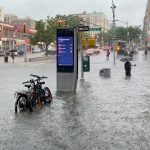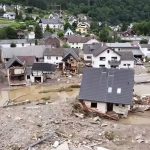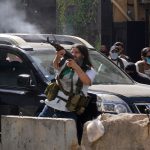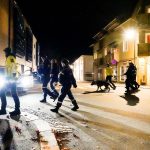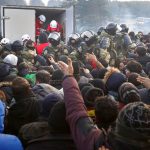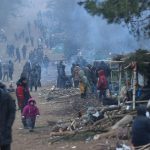In below freezing temperatures, hundreds of British troops train, alongside Estonian soldiers, at NATO’s Winter Camp.
One officer from the UK Royal Tank Regiment tells me it’s cold but “really good to be out with the Estonians”.
This is a routine exercise, but the mood is serious, tense even; Estonia, like the other Baltic states, is surrounded by the Baltic Sea, Russia and Russian ally Belarus.
This is NATO‘s border with Russia.
A show of military firepower
The soldiers split into two groups: opposing and defensive forces, with British and Estonians working together.
Tanks sweep past, and on foot we see camouflaged troops crawling through thick snow.
Ukraine crisis: Russia’s Vladimir Putin pledged not to escalate tensions, French President Emmanuel Macron claims
Putin looks like a man still weighing his options – as Germany and US attempt to present a united front against Russia
Russian President Vladimir Putin warns Europe will be dragged into military conflict if Ukraine joins NATO
They are preparing for combat in the harshest conditions.
NATO forces are not here to anticipate an attack but this defence mission is aimed at deterring aggression, a show of military firepower right on Russia’s doorstep.
Western forces have carried out exercises in the Baltics since the annexation of Crimea, but the UK is now considering sending significantly more troops to Estonia.
I ask Estonian Sergeant Karlis Sootalu about Russia.
He tells me “it’s a threat but we do our job like we always do”, adding: “It is good to have our allies here.”
All the while, diplomacy continues.
French President Emmanuel Macron met with Vladimir Putin yesterday.
Today, he’s in the Ukrainian capital Kyiv, hoping to unlock the deadlock and prove himself Europe’s peacemaker.
Russia denies any invasion plans, and says its security concern is the expansion of NATO.
‘If Russian troops move, we are not prepared’
But an unprecedented number of Russian troops have been moved to Belarus and the Baltic states are nervous.
One Estonian government source tells me: “If Russian troops move, we are not prepared.”
We speak to Kusti Salm, the Estonian Ministry of Defence’s permanent secretary, who tells us that 15,000 Russian troops are in Belarus and that number could double.
He says if the situation continues, there would need to be “a dramatic change” from NATO.
Please use Chrome browser for a more accessible video player
Western allies are already moving troops, and resources, east: Germany, accused of inaction, has sent hundreds of troops to neighbouring Lithuania and a field hospital to Ukraine.
The UK has sent 350 more troops to the Polish border.
From the Winter Camp we drive to Estonia’s most Eastern point, where you can see Russia in the fog across the Narva River.
Please use Chrome browser for a more accessible video player
The “Friendship Bridge”, ironically, once connected this Soviet satellite state to Russia; now this is NATO’s buffer with Europe.
An Estonian government source tells me “dividing and dismantling NATO is part of Russia’s bigger picture”.
Russia’s security objectives haven’t changed but the opportunity, he believes, might have.





